MINDFULNESS AND MEDITATION FOR PEAK PERFORMANCE

Introduction:
Mindfulness and meditation have gained widespread popularity in recent years, with many people practising these techniques for their numerous benefits. These practices can help individuals enhance their cognitive function, emotional regulation, and stress management skills. In the present chapter, we will discuss the neuroscience of mindfulness and meditation, the various techniques and applications for enhancing performance, and how these practices have contributed to peak performance in various
fields.
Many famous personalities have credited their success to the practice of mindfulness and meditation. These include George Harrison, who was a practitioner of Transcendental Meditation (TM), Steve Jobs, who famously meditated regularly, and Oprah Winfrey, who is an advocate of mindfulness practices.
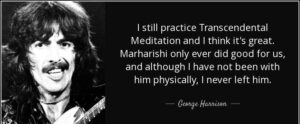
George Harrison was introduced to TM in the mid-1960s and became a devoted practitioner for the rest of his life. He credited the practice with helping him cope with the stress and pressure of being a member of the Beatles, as well as enhancing his creativity and productivity. In an interview with Rolling Stone magazine, he said, “It’s like a key to a secret room, and the room is a better room for being there.”
Steve Jobs was also a fan of mindfulness and meditation. He famously spent time at a Zen centre in India in the 1970s and continued to practice meditation throughout his life. He once said, “If you just sit and observe, you will see how restless your mind is. If you try to calm it, it only makes it worse, but over time it does calm, and when it does, there’s room to hear more subtle things – that’s when your intuition starts to blossom and you start to see things more clearly and be in the present more. Your mind just slows down, and you see a tremendous expanse at the moment. You see so much more than you could see before.”

Oprah Winfrey is another well-known advocate of mindfulness practices. She has spoken publicly about how meditation has helped her manage stress, improve her focus, and enhance her overall well-being. She has also hosted several episodes of her TV show, Super Soul Sunday, dedicated to exploring the benefits of mindfulness and meditation.
Research has consistently shown that mindfulness and meditation have numerous benefits for cognitive function, emotional regulation, and stress management. For example, a study published in the journal Frontiers in Human Neuroscience found that just four days of mindfulness meditation training improved working memory capacity and executive control. Another study published in the Journal of Personality and Social Psychology found that mindfulness meditation reduced negative affect and stress reactivity. As more research is conducted, we can expect to learn even more about how these practices can enhance peak performance in various domains.
As someone who has always been fascinated by the human mind and its vast potential, I’ve been exploring various techniques to enhance my performance and tap into altered states of consciousness. One approach that has captivated my attention is the use of binaural beats during meditation.

It’s astonishing to think that humans have been using altered states of consciousness for ages, but our modern monophasic lifestyle has led us to forget these innate abilities. Thankfully, I stumbled upon the works of visionaries like Steven Kotler and Vishen Lakhiani, who shed light on the incredible potential of tapping into different brainwave frequencies to transform our realities.
When I slip on my headphones and listen to carefully crafted binaural beats, I’m transported to a whole new realm of consciousness. As the beats synchronize my brainwaves, I can feel a shift in my awareness. Alpha waves envelop me, and I enter a state of relaxed focus and heightened creativity. Ideas flow effortlessly, and I’m able to access insights that were once elusive in my regular waking state.
But it doesn’t end there. As the beats transition to theta waves, I find myself diving into a deeper state of meditation. My mind becomes calm, and I’m able to connect with my inner self on a profound level. I experience vivid images and sensations arising from my subconscious mind, revealing hidden truths and illuminating aspects of my being that I wasn’t aware of before. It’s a journey of self-discovery that leaves me in awe of the vast potential of the human mind.

The binaural beats continue to guide me deeper, and I enter the realm of delta waves. I feel a profound sense of relaxation as if my body and mind are being rejuvenated at a cellular level. It’s an experience of deep replenishment and revitalization, leaving me feeling refreshed and renewed.
As I explore these altered states of consciousness with binaural beats, I can’t help but envision the possibilities. I imagine effortlessly entering a flow state during my work, where my creativity and productivity soar to new heights. I see myself tapping into my subconscious mind to unlock hidden potentials and reshape my external reality. The potential for growth, insight, and transformation is awe- inspiring, and I’m left with an insatiable curiosity to continue delving into the depths of my consciousness. Everyone can unlock the hidden realms of consciousness and enhance their performance in ways they never thought possible. Please try exploring the mysteries of altered states of consciousness.
The Neuroscience of Mindfulness and Meditation:
Research has shown that mindfulness and meditation can positively impact the structure and function of the brain. Mindfulness practices such as focused attention meditation can lead to increased activity in the prefrontal cortex, which is associated with attention and cognitive control. Meditation has also been shown to increase grey matter in regions of the brain involved in emotion regulation, such as the anterior cingulate cortex and hippocampus.
Furthermore, mindfulness and meditation can also affect the default mode network, a network of brain regions that is active when we are not focused on a task. When we practice mindfulness, we are more likely to reduce activity in this network, leading to improved attention and cognitive function.
Techniques and Applications for Enhancing Performance:
There are many different techniques and applications of mindfulness and meditation for enhancing performance. One such technique is mindfulness-based stress reduction (MBSR), which is a program that uses mindfulness practices to help individuals cope with stress and improve their overall well-being.
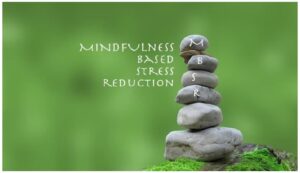
Another technique is loving-kindness meditation, which involves cultivating feelings of love, kindness, and compassion towards oneself and others. This practice has been shown to improve empathy and reduce stress.
Mindfulness and meditation can also be used in sports and athletic training. For example, many professional athletes practice mindfulness and meditation to improve their focus and mental clarity during competitions.
There are many books, movies, and celebrities that have embraced mindfulness and meditation as a way to enhance their performance. One notable example is the book “10% Happier” by Dan Harris, which chronicles the author’s journey from scepticism to embracing mindfulness meditation.
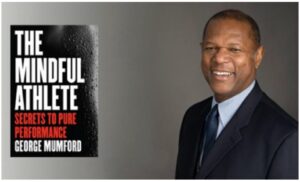
Another example is the movie “The Mindful Athlete,” which explores how mindfulness practices can be used to enhance performance in sports. The movie features interviews with many professional athletes who practice mindfulness, including NBA player George Mumford.
Celebrities such as Katy Perry, and Hugh Jackman have also spoken publicly about their meditation practices and how it has helped them improve their mental well-being and performance in their respective fields.
How the Practice of Meditation Contributes to Peak Performance:
The practice of meditation has been shown to contribute to peak performance in various fields. For example, studies have shown that mindfulness practices can improve cognitive function, including attention and memory. This can be particularly helpful for students and professionals who need to maintain focus and concentration for long periods.
Furthermore, mindfulness practices can also help individuals regulate their emotions and reduce stress. This can be helpful for individuals in high-pressure jobs or in situations where they need to remain calm under pressure, such as athletes competing in high-stakes competitions.
Finally, mindfulness and meditation practices can also improve overall well-being, which can contribute to peak performance in all areas of life. By reducing stress and improving emotional regulation, individuals are better able to focus on their goals and perform at their best.
Key benefits of mindfulness and meditation for peak performance:
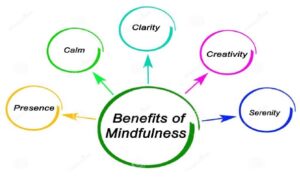
Improved Focus and Concentration:
One of the most widely recognized benefits of mindfulness and meditation is improved focus and concentration. These practices can help us train our minds to stay present at the moment, rather than getting lost in distractions and multitasking. By learning to stay focused and attentive, we can achieve greater productivity and efficiency in our work and personal lives.
Reduced Stress and Anxiety:
Stress and anxiety can be significant barriers to peak performance, as they can interfere with our ability to think clearly and make decisions. Mindfulness and meditation can help us manage stress and anxiety by teaching us how to respond to challenging situations with calm and equanimity. By learning to stay centred and grounded, we can approach challenges with a clear head and make better decisions.
Increased Emotional Intelligence:
Emotional intelligence is the ability to understand and manage our own emotions, as well as to perceive and respond to the emotions of others. Mindfulness and meditation can help us develop greater emotional intelligence by teaching us how to observe our thoughts and feelings without judgment. By cultivating a non-judgmental awareness of our inner world, we can develop greater empathy and compassion for others.
Improved Creativity:
Another benefit of mindfulness and meditation is increased creativity. These practices can help us access the deeper parts of our minds, where creative ideas often originate. By learning to quiet our busy minds and listen to our intuition, we can tap into our innate creativity and generate new and innovative ideas.
Greater Resilience:
Finally, mindfulness and meditation can help us develop greater resilience in the face of challenges and setbacks. By teaching us how to stay present at the moment and accept things as they are, these practices can help us bounce back from adversity and stay focused on our goals. Here are a few examples of how these practices are being used in different fields:
Professional Sports:
Many professional athletes have embraced mindfulness and meditation as a way to improve their performance on the field or court. For example, LeBron James, Kobe Bryant, and Michael Jordan are all known to have practised meditation to help them stay focused and calm during high-pressure situations. In addition, many professional sports teams now incorporate mindfulness and meditation into their training programs to help athletes manage stress and improve mental resilience.
Education:
In recent years, mindfulness and meditation have also become popular tools in the education field. Teachers and students alike are using these practices to help manage stress and anxiety, improve focus and attention, and enhance overall well-being. For example, a study of a mindfulness program in schools found that students who participated in the program had a better executive function and emotional regulation than those who did not.
Business:
Mindfulness and meditation are also being used in the business world to help leaders and employees manage stress and improve productivity. Many companies now offer mindfulness and meditation programs as part of their wellness initiatives, recognizing that these practices can lead to better job performance and overall job satisfaction.
SOME WAYS OF BIOHACKING MEDITATION FOR PEAK PERFORMANCE

Binaural Beats:
Binaural beats are a type of sound therapy that involves playing two different frequencies in each ear. This creates a third frequency that the brain perceives as a rhythmic beat. Studies have shown that listening to binaural beats can enhance relaxation, reduce anxiety, and improve focus during meditation. By using binaural beats during meditation, you can enhance the benefits of the practice and potentially achieve deeper states of relaxation and focus.
Neurofeedback:
Neurofeedback is a type of biofeedback that uses real-time brain activity data to train the brain to regulate its activity. This can be particularly useful for enhancing the benefits of meditation and mindfulness, as it can help you learn to control your brainwaves and enter deeper states of relaxation and focus.
Wearable Technology:
There are now several wearable technologies available that can help enhance the benefits of meditation and mindfulness. For example, the Muse headband uses EEG sensors to measure brain activity and provide feedback on your meditation practice. This can help you stay focused and engaged during meditation, and track your progress over time.
Supplementation:
Certain supplements have been shown to enhance the benefits of meditation and mindfulness. For example, omega-3 fatty acids have been shown to reduce inflammation and enhance brain function, while magnesium can help reduce stress and promote relaxation. By supplementing your diet with these and other nutrients, you can enhance the benefits of your meditation practice and achieve peak performance.
Mindfulness-based Cognitive Therapy (MBCT):
MBCT is a type of therapy that combines mindfulness practices with cognitive therapy techniques. It is effective for reducing symptoms of depression and anxiety, as well as enhancing overall well-being. By integrating MBCT into your meditation practice, you can enhance the cognitive benefits of mindfulness and potentially achieve peak performance in various areas of your life.
These are just a few examples of the many ways to hack meditation and mindfulness for peak performance. By experimenting with different techniques and technologies, you can discover what works best for you and unlock the full potential of these practices.
DEVICES THAT CAN BE USED TO ENHANCE THE BENEFITS OF MINDFULNESS AND
MEDITATION

Heart Rate Variability (HRV) Monitors:
HRV monitors measure the variation in time between successive heartbeats, which is an indicator of overall heart health and stress levels. By using an HRV monitor during meditation, you can track your stress levels and see how they change in response to different techniques and practices.
Light Therapy Devices:
Light therapy devices use special lights to simulate natural sunlight and promote relaxation and mood enhancement. By using a light therapy device during meditation, you can enhance the relaxation and mood-enhancing benefits of the practice.

Essential Oil Diffusers:
Essential oils are plant extracts that have been shown to have various health benefits, including promoting relaxation and reducing stress. By using an essential oil diffuser during meditation, you can enhance the relaxation and stress-reducing benefits of the practice.
Biofeedback Devices:
Biofeedback devices use sensors to monitor physiological data, such as heart rate, blood pressure, and muscle tension. By using a biofeedback device during meditation, you can receive real-time feedback on your physiological responses and learn to control them through mindfulness practices.
Mindfulness Apps:
There are many mindfulness apps available that provide guided meditations and other tools to enhance your practice. Examples include Headspace, Calm, and Insight Timer. By using a mindfulness app, you can receive guidance and support for your meditation practice and potentially enhance the benefits of the practice.
Neuralink:
Neuralink is a company co-founded by Elon Musk that is working on developing brain-machine interfaces (BMIs). The goal of these BMIs is to create a direct connection between the human brain and computers, which could potentially revolutionize the way we interact with technology and even enhance human performance.
One potential application of Neuralink’s technology is to enhance the benefits of meditation and mindfulness. By creating a direct link between the brain and a computer, Neuralink could potentially monitor brain activity during meditation and provide real-time feedback to help the meditator enter deeper states of relaxation and focus.
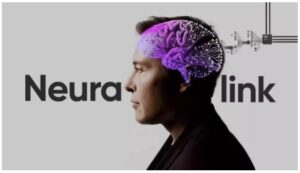
Another potential application is to use BMIs to enhance cognitive function and memory. By creating a direct connection between the brain and a computer, it may be possible to enhance memory recall and cognitive function by augmenting the brain’s natural abilities.
While these are exciting possibilities, it’s important to note that Neuralink’s technology is still in the early stages of development, and many ethical and safety concerns needto be addressed. It’s also unclear how these technologies will be regulated and how they will impact society as a whole. Neuralink has the potential to revolutionize the way we interact with technology and potentially enhance human performance, including the benefits of meditation and mindfulness. However, it’s important to approach these developments with caution and ensure that ethical and safety concerns are carefully addressed.
These are just a few examples of the many devices and technologies available to enhance the benefits of meditation and mindfulness. By experimenting with different tools and techniques, you can find what works best for you and potentially achieve peak performance in various areas of your life.
In conclusion, mindfulness and meditation are powerful tools for enhancing performance in all areas of life. By improving focus and concentration, reducing stress and anxiety, increasing emotional intelligence, promoting creativity, and enhancing resilience, these practices can help us achieve our goals and reach our full potential. Whether you’re an athlete, a student, a business professional, or simply someone who wants to improve their mental and emotional well-being, mindfulness and meditation can be an invaluable addition to your arsenal of peak performance tools.
 Dr K. Jayanth Murali is a retired IPS officer and a Life Coach. He is the author of four books, including the best-selling 42 Mondays. He is passionate about painting, farming, and long-distance running. He has run several marathons and has two entries in the Asian book of Records in full and half marathon categories. He lives with his family in Chennai, India. When he is not running, he is either writing or chilling with a book.
Dr K. Jayanth Murali is a retired IPS officer and a Life Coach. He is the author of four books, including the best-selling 42 Mondays. He is passionate about painting, farming, and long-distance running. He has run several marathons and has two entries in the Asian book of Records in full and half marathon categories. He lives with his family in Chennai, India. When he is not running, he is either writing or chilling with a book.
